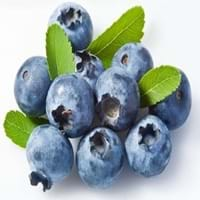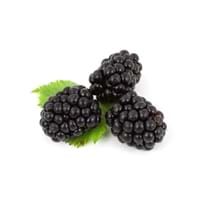Health Benefits
Cancer prevention, Cures gastro-intestinal troubles, Improves night vision, Improves stomach health, Prevents diabetes, Prevents high blood pressure, Reduces blood circulation problems
Cancer prevention, Heart care, Increases metabolic rate, Reduces stress, Treatment of dysentary, Treatment of skin Diseases
General Benefits
Fights against infections, Helps in weight loss, Prevents blood clotting in vessels, Treatment of urinary tract infections
Digestive aid, Maintains healthy cholesterol level, Strengthens bones
Skin Benefits
Anti-aging benefits, Nourishes skin, Protects against skin damage
Hydrates skin, Skin rejuvenation, Skin revitalization
Hair Benefits
Prevents hair loss
Promotes longer and healthier hair
Allergy Symptoms
Not Available
Facial muscle tension, Pressure in sinus, Respiratory congestion, Runny nose, Sneezing, Tingling sensation in wrist and face
Side Effects
Decrease in blood sugar levels, Diarrhoea, Dizziness, Headache, Internal bleeding, Stomach pain
Nausea, Vomiting, Might cause change of urine color
Best Time to Eat
As a snack in the late afternoon, Don't consume at night and before bed, Eat the fresh ones, avoid mixing with any other foods, don't eat after meal., Morning time (before lunch)
Best if taken as a breakfast (or empty stomach), As a snack in the late afternoon, Don't consume at night and before bed, Eat the fresh ones, avoid mixing with any other foods, don't eat after meal., Morning time (before lunch)
Vitamin B5 (Pantothenic Acid)
Vitamin C (Ascorbic Acid)
Vitamin K (Phyllochinone)
Calories in Fresh Fruit with Peel
Calories in Fresh Fruit without Peel
Not Available
Not Available
Calories in Frozen Form
Not Available
Calories in Dried Form
Not Available
Calories in Canned Form
Not Available
Calories in Pie
Not Available
Season
Summer
Spring, Summer
Varieties
Dwarf bilberry, Piper, bog blueberry, Northern bilberry, Mountain bilberry and Oval-leaved bilberry
Prime Ark, Prime Jim, Illini Hardy, Kiowa, Shawnee, Apache, Arapaho, Chester, Hull, Natchez, Navaho and Triple Crown and Von
Color
Dark purple
Purplish black
Inside Color
Light Green
Magenta
Origin
Unknown
Asia, Europe, North America, South America
Soil Type
Moist, Well-aerated
Well-drained
Climatic Conditions
Cold
Dry, Warm to hot climate
Facts about
- Bilberries are used in manufacturing of alcoholic drinks.
- They are used to improve aromas of sorbets.
- The green extract of it's leaves is used in textile industry as natural dye.
- There are around 2000 varieties of blackberries throughout the world.
- 80-85 degrees is the ideal temperature for its production.
- Leaves of blackberry tree are used to treat sore throats and mild inflammation of the gums.
Top Producer
Japan
United States of America
Other Countries
Denmark, Finland, Iceland, Sweden
China, New Zealand, Serbia, South Africa
Top Importer
United States of America
United States of America
Top Exporter
Chile
Mexico
Botanical Name
Vaccinium myrtillus
Rubus Fruticosus
Synonym
blaeberry, whinberry, European blueberry, whortleberry
Rubus Millspaughii or Rubus Laciniatus
Subkingdom
Tracheobionta
Tracheobionta
Division
Magnoliophyta
Magnoliophyta
Class
Magnoliopsida
Magnoliopsida
Subclass
Dillenhidae
Rosidae
Family
Ericaceae
Rosaceae
Species
Vaccinium myrtillus
Rubus fruticosus
Difference Between Bilberry and Blackberry
We might think that Bilberry and Blackberry are similar with respect to nutritional value and health benefits. But the nutrient content of both fruits is different. Bilberry and Blackberry Facts such as their taste, shape, color, and size are also distinct. The difference between Bilberry and Blackberry is explained here.
The amount of calories in 100 gm of fresh Bilberry and Blackberry with peel is 44.00 kcal and 43.00 kcal and the amount of calories without peel is Not Available and Not Available respectively. Thus, Bilberry and Blackberry belong to Low Calorie Fruits and Low Calorie Fruits category.These fruits might or might not differ with respect to their scientific classification. The order of Bilberry and Blackberry is Ericales and Rosales respectively. Bilberry belongs to Ericaceae family and Blackberry belongs to Rosaceae family. Bilberry belongs to Vaccinium genus of Vaccinium myrtillus species and Blackberry belongs to Rubus genus of Rubus fruticosus species. Beings plants, both fruits belong to Plantae Kingdom.









